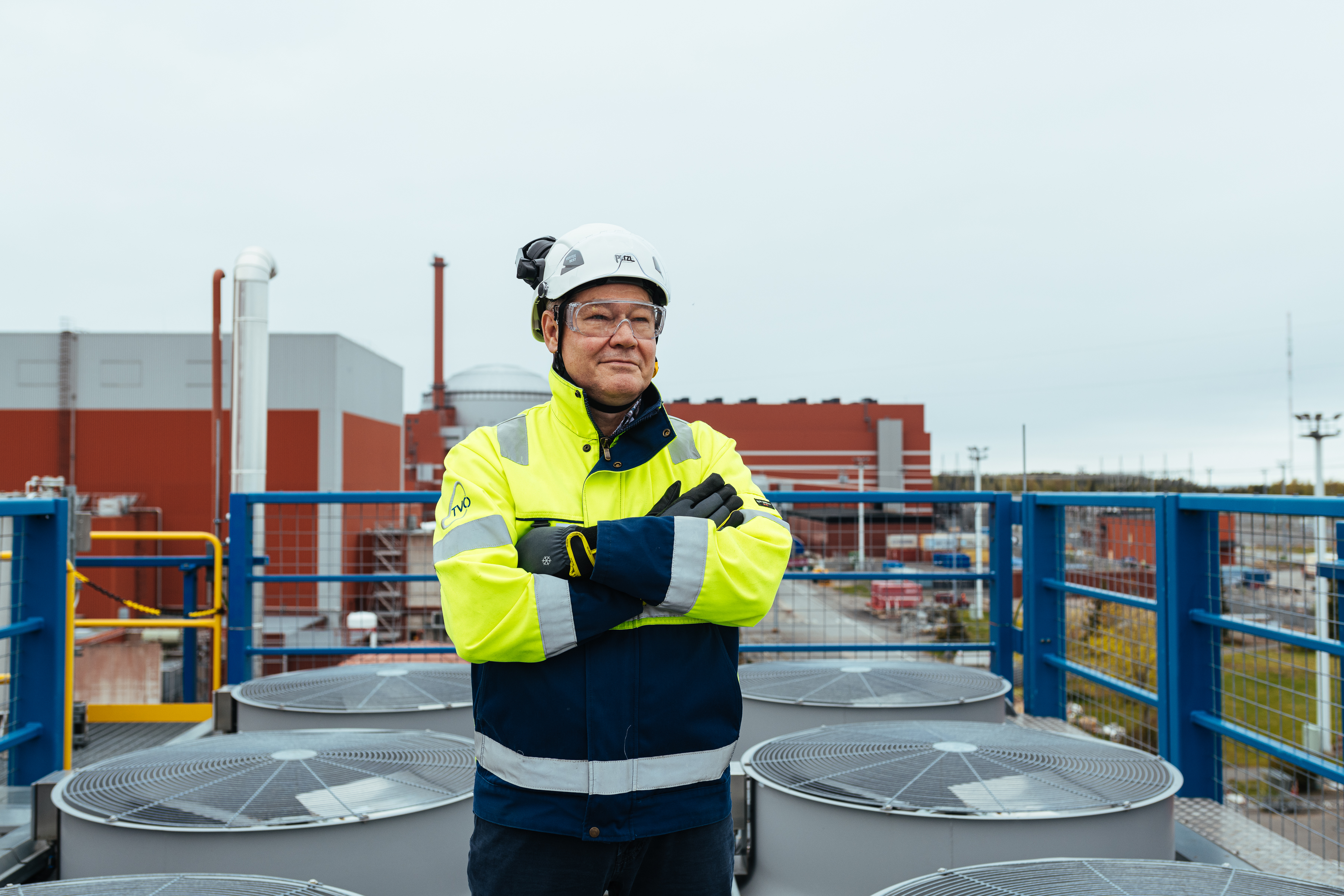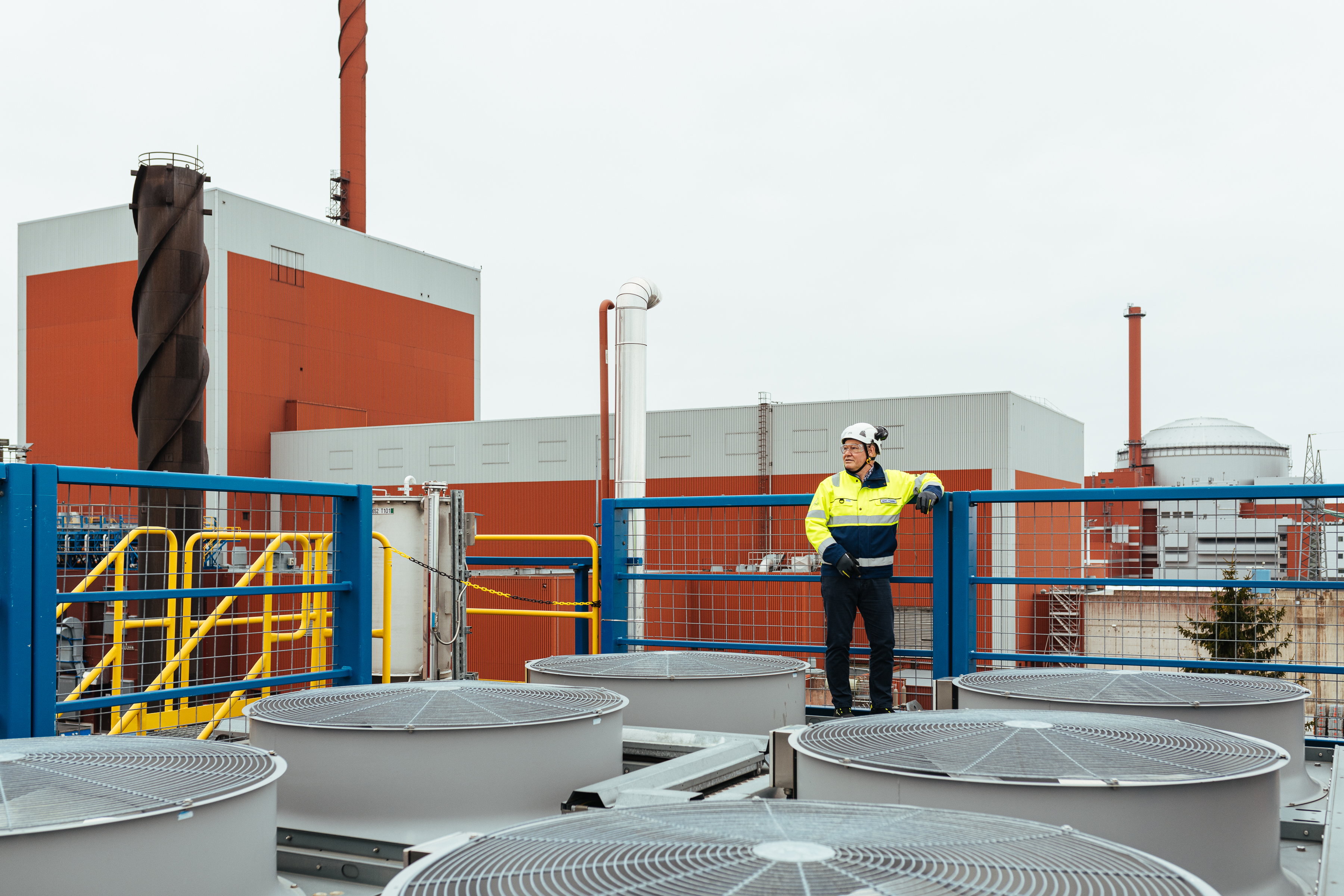Largest modernisation project in history of Olkiluoto reaches completion
The project brought to completion in Olkiluoto in April was exceptional in scope, even for a nuclear power plant. On 10 April, the last one of the new emergency diesel generators (EDG) of the Olkiluoto 1 and Olkiluoto 2 plant units was taken into service. All in all, the EDG project included the replacement of eight emergency diesel generators with their auxiliary systems, and the construction of one completely new diesel generator plant.

Seppo Hyvärinen came to know the EDG project like the back of his hand. The project premise first landed on his desk already in 2007.
In normal electricity production conditions, the diesel generators are completely unnecessary. When everything works according to plans, the generators just sit there, unused. They only come to life when tested at regular intervals.
However, the diesel generators are of crucial importance for nuclear safety.
- In the potential, albeit improbable case that the plant units lose their power supply, the emergency diesel generators will produce the required power supply for the needs of key safety systems, Automation Engineer Seppo Hyvärinen explains the purpose of the EDGs.
Each of the emergency diesel generators is constantly in stand-by readiness and will start up and be ready to produce electricity in under ten seconds.
Not a sprint
Although Seppo Hyvärinen’s job title refers to automation, he is very much a project man. He has spent practically his entire 24-year career in Olkiluoto working in projects. And a lion’s share of it in the modernisation project that has now been completed. The first time the matter found its way to his desk was already in 2007.
- It was in that year that Jarmo Tanhua, then the SVP for Engineering and later appointed CEO, tasked us with the replacement of the emergency diesel generators. We were to work out how to do it, when it could be done, and what it would cost?
Easier said than done. Even the word impossible was at one point uttered by the project team set up by Hyvärinen.
- The reason for this was that as we were outlining the replacement of one generator, we came to the conclusion that it would take about six months, he starts.
As the replacement of the EDGs would not be possible in power operation, each plant unit would have had to be shut down for two years. And as this was not possible for reasons easy to understand, the solution had to be looked for outside the box.
Brainstorming led to a solution
The solution was found in a brainstorming session of the project team. Hyvärinen recalls that the answer was first voiced by Pekka Nousiainen, a long-term Olkiluoto pro who has now retired.
The solution to the problem was a brand new diesel generator, EDG No. 9. If and when one were to be available, the replacement processes of the diesel generators could be carried out during normal plant operation. This would guarantee the operability of four emergency diesel generators at OL1 and OL2 also during the replacement processes. In other words, no need to shut down production.
The journey to implementation was a very long one, though. The challenge and the complexity of the matter is illustrated by the fact that the modernisation contract with Wärtsilä was not signed until 2013.
And it was not a small contract by any means. It comprised four full folders of pages. And the numbers related to the project are sky high in other respects, as well.
All in all, more than 47,000 documents have been created for the project, and more than 550 meetings have been held just on matters pertaining to project management, Hyvärinen counts.

The EDG project was a huge undertaking also in terms of numbers. A total of some 236 kilometres of new cables were laid during the project. The amount of steel structures needed for the project was about 567,000 kilograms.
Largest in history by many indicators
The EDG project that has now been completed has been the largest single modernisation project in the entire history of Olkiluoto.
- It is the largest not only in terms of schedule, but also in terms of technical standards and money, Hyvärinen says. For example, four new buildings were built on the plant site for the project and a fifth, separate building for the extra diesel generator No. 9, Hyvärinen explains. The supply connection between the plants was also rebuilt during the project.
One of the features of the new generators is that they are both water and air cooled.
- In normal conditions, the EDGs are cooled with seawater, but should there for some reason not be seawater available for cooling, the diesel generators will automatically change over to air cooling. This ensures the availability of the system in all conditions, he says.
The modernisation was planned bearing also in mind a potential power uprate. TVO is currently investigating the possibility of increasing the power level of the plants by 90 MW.
- At least EDGs will not stop this from happening, Hyvärinen smiles.
A little sentimental but happy
The first emergency diesel generator built was the brand new one, No. 9. It was finished in 2020, ready to start the actual replacement processes. The processes completed in April this year, that is.
And what feelings does reaching the finishing line after the long project run evoke?
- A little sentimental, truth be told. This project has been my work for almost one third of my life so far. On the other hand, I’m also very happy and proud, as well as extremely satisfied with the work we have done for this project, he sums up.
In the accompanying video, you’ll be introduced by Seppo to the ninth diesel generator built for use by the plant units. Its completion was key to the execution of the entire project, as it enabled work on the other eight diesel generators to proceed without impacting the electricity production of the plant units.
Text: Ville Kulmala
Photos and Video: Tapani Karjanlahti
Share